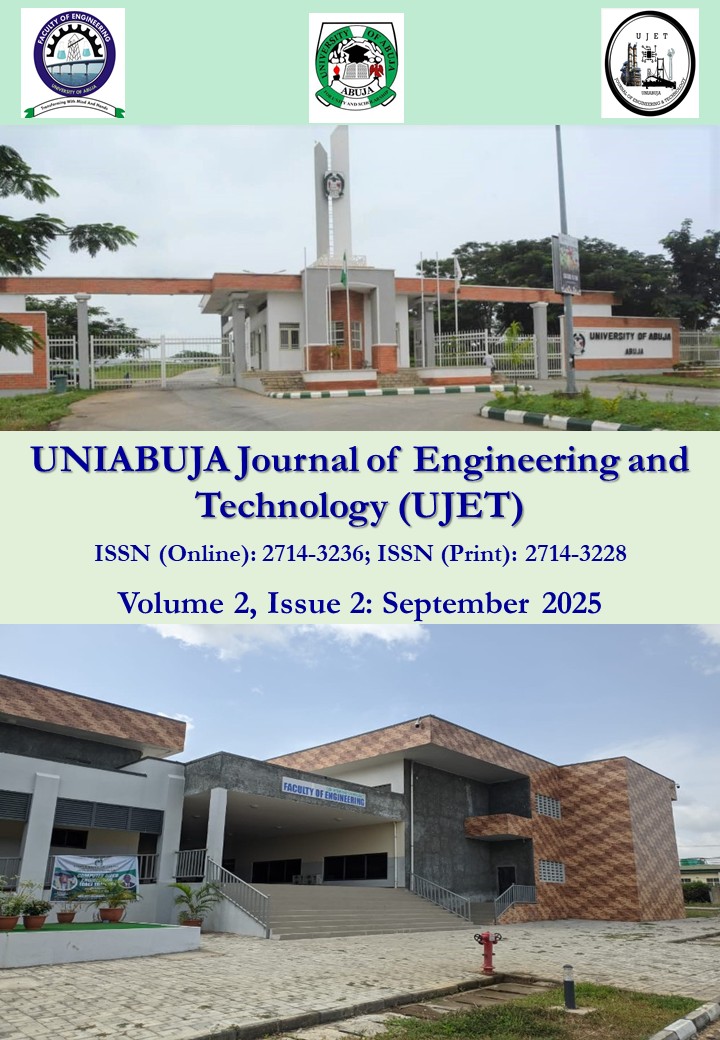Effects of Particle Sizes and on Combustion Characteristics of Briquettes Produced from Sugar Cane Biomass
DOI:
https://doi.org/10.70118/ujet.2025.0202.05Keywords:
Bagasse, biomass, calorific value, flame propagation rate, particle size, volatile matterAbstract
The Effects of Particle Sizes and on Combustion Characteristics of Briquettes Produced from Sugar Cane Biomass was studied to determine the effect of particle size (0.25, 0.50 and 1.00 mm) on the combustion characteristics of Briquettes Produced from Sugar Cane waste (bagasse). The bagasse and molasses were collected from savannah sugar company Numan and gum Arabic was brought from Muda-Lawan market Bauchi. Briquettes were produced at Xpediant Global vision Bauchi and combustion characteristics were determined at industrial design workshop Abubakar Tafawa Balewa University Bauchi. Ignition time and burn time were measured with a stop watch, while burn rate, flame propagation rate, and calorific value of bagasse briquettes were determine based on the standard equations and water boiling test was measured with a thermometer. SPSS 23 was used as a statistical tool to analyze the data obtained from the laboratory experiment. The proximate composition of sugarcane bagasse was ash content 16.52%, volatile matter 65.67%, moisture content 7.77% and carbon 10.04%, while ultimate composition of sugarcane bagasse was, carbon (C) 42.54%, nitrogen (N) 13.92%, oxygen (O) 35.48%, sulphur (S) 1.52%, hydrogen (H) 6.50%. The most effect of Combustion characteristics for the corresponding particle sizes: ignition time(0.5mm) 52.7±33.8s, burn time(0.25mm) 53.2±19.7min, burn rate(0.25mm) 0.44±0.15g/min, flame propagation rate(0.25mm) 2.4±1.1mm/min, water boiling test(0.25mm) 81.0±7.2°C and calorific value (1.00mm) 32.2±1.2 MJ/kg. The results obtained showed that particle size of 0.25mm had most effect on three combustion characteristics: burn time, burn rate and flame propagation rate, while particle size of 0.50mm had most effect on two combustion characteristics: ignition time and water boiling test, and particle size 1.00mm had most but insignificant effect on calorific value. The particle size of Sugarcane biomass has been proven to be significant on five combustion characteristics, while caloric value for sugarcane biomass has been proven to be effective. The study concluded that particle size 0.25mm had the most significant effect on combustion characteristics of bagasse briquettes.
Downloads
Published
How to Cite
Issue
Section
License
Copyright (c) 2025 UNIABUJA Journal of Engineering and Technology (UJET)

This work is licensed under a Creative Commons Attribution-NonCommercial-ShareAlike 4.0 International License.
